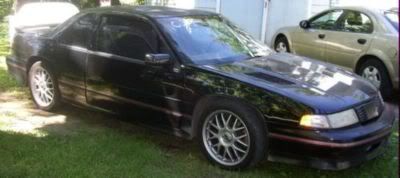background info:
-91 GP/3.4 dohc
-Not an ABS car
-ceramic pads w/2k
-new rotors w/2k
-94+ rear brakes
-not a squishy pedal (no air in the lines)
-stops ok but requires abnormal amount of pedal effort
-6/6 cam timing (vacuum issue? brakes same as when -13*)
I have a modified intake manifold and I believe the fitting for the brake booster hose that I used is 5/8" diameter - what is the stock size? Perhaps the hose is too small? The hose is not 'squishing' under vacuum. I use a 1 way check valve to retain vacuum in the booster when manifold vacuum drops. I don't believe the booster is leaking. I have a hand operated vacuum pump/gauge that I can try to hook up to the booster and see if it maintains vacuum but given the size of the pump and volume of the booster I don't know if this would be a legit test.
What is the minimum amount of vacuum the motor should be pulling to have good power assist? I can throw the vac gauge on it and get the actual value the engine is pulling.
Could the booster be bad? How could I tell?
-91 GP/3.4 dohc
-Not an ABS car
-ceramic pads w/2k
-new rotors w/2k
-94+ rear brakes
-not a squishy pedal (no air in the lines)
-stops ok but requires abnormal amount of pedal effort
-6/6 cam timing (vacuum issue? brakes same as when -13*)
I have a modified intake manifold and I believe the fitting for the brake booster hose that I used is 5/8" diameter - what is the stock size? Perhaps the hose is too small? The hose is not 'squishing' under vacuum. I use a 1 way check valve to retain vacuum in the booster when manifold vacuum drops. I don't believe the booster is leaking. I have a hand operated vacuum pump/gauge that I can try to hook up to the booster and see if it maintains vacuum but given the size of the pump and volume of the booster I don't know if this would be a legit test.
What is the minimum amount of vacuum the motor should be pulling to have good power assist? I can throw the vac gauge on it and get the actual value the engine is pulling.
Could the booster be bad? How could I tell?


Comment